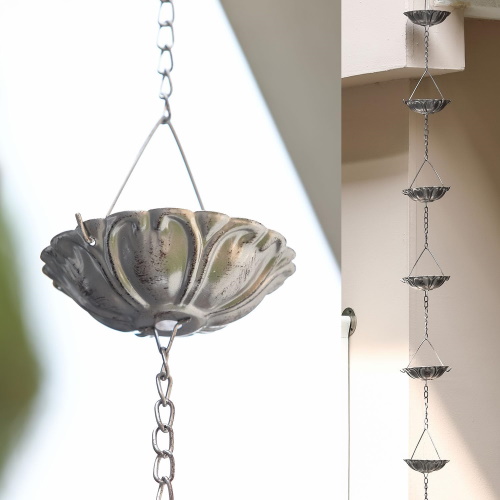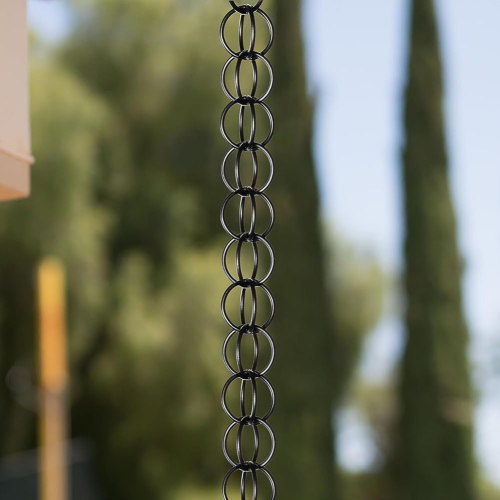6 reasons to install a rain chain – this sustainable system will benefit your yard
Much more than a gardening trend, rain chains are an eco friendly, long-term solution to sustainable watering
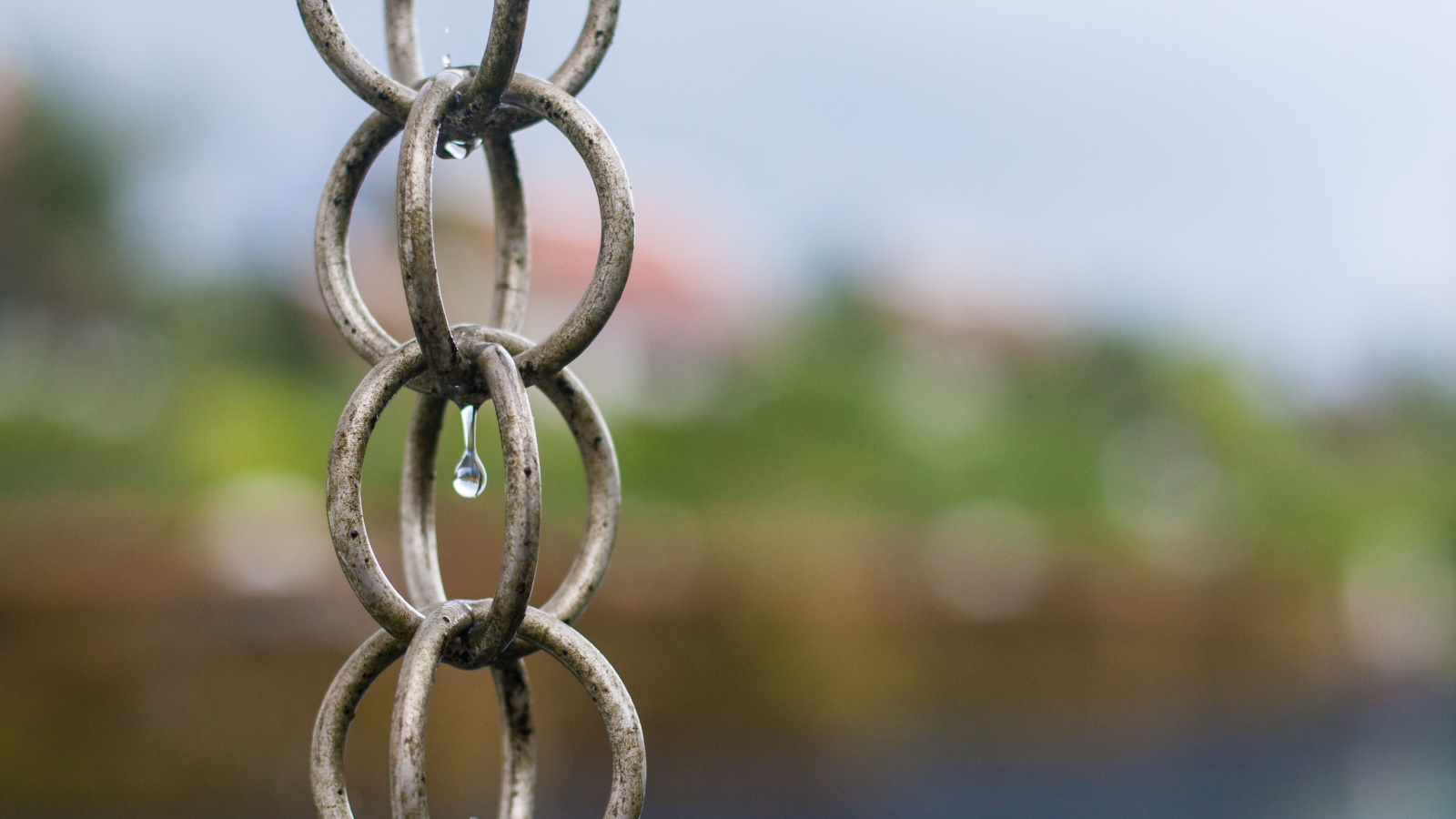

You may already be familiar with the term rain chain, as these sustainable systems surged in popularity last year. But they are by no means a fad.
So, why have rain chains become so popular? Well, let's start with the basics: What is a rain chain? It is a rainwater harvesting system, which is easily installed and provides a decorative alternative to a downpipe. Rain chains channel rainwater collected in gutters to where it is most needed in your yard. This might be into a water butt or barrel, or directly into a flower bed.
There are many reasons why installing a rain chain on the side of your home, garden shed or garage is a great idea. Here, we take a closer look at some of the great reasons to install a rain chain, and highlight a few of the different styles available on the market right now.
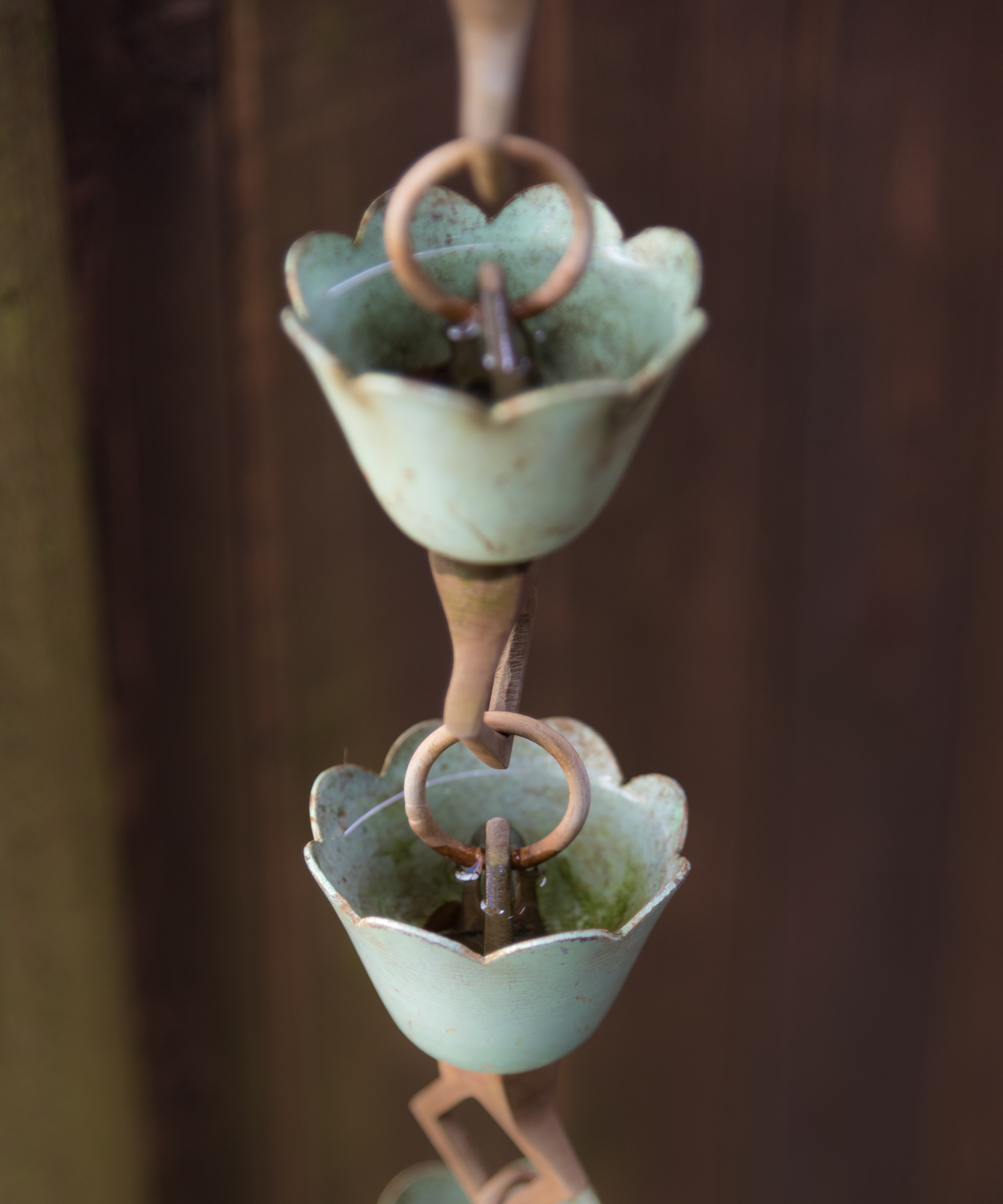
6 reasons to install a rain chain in your yard
A rain chain is a simple and effective way to start introducing eco-friendly ideas to your home and yard.
1. They are an essential part of sustainable garden design
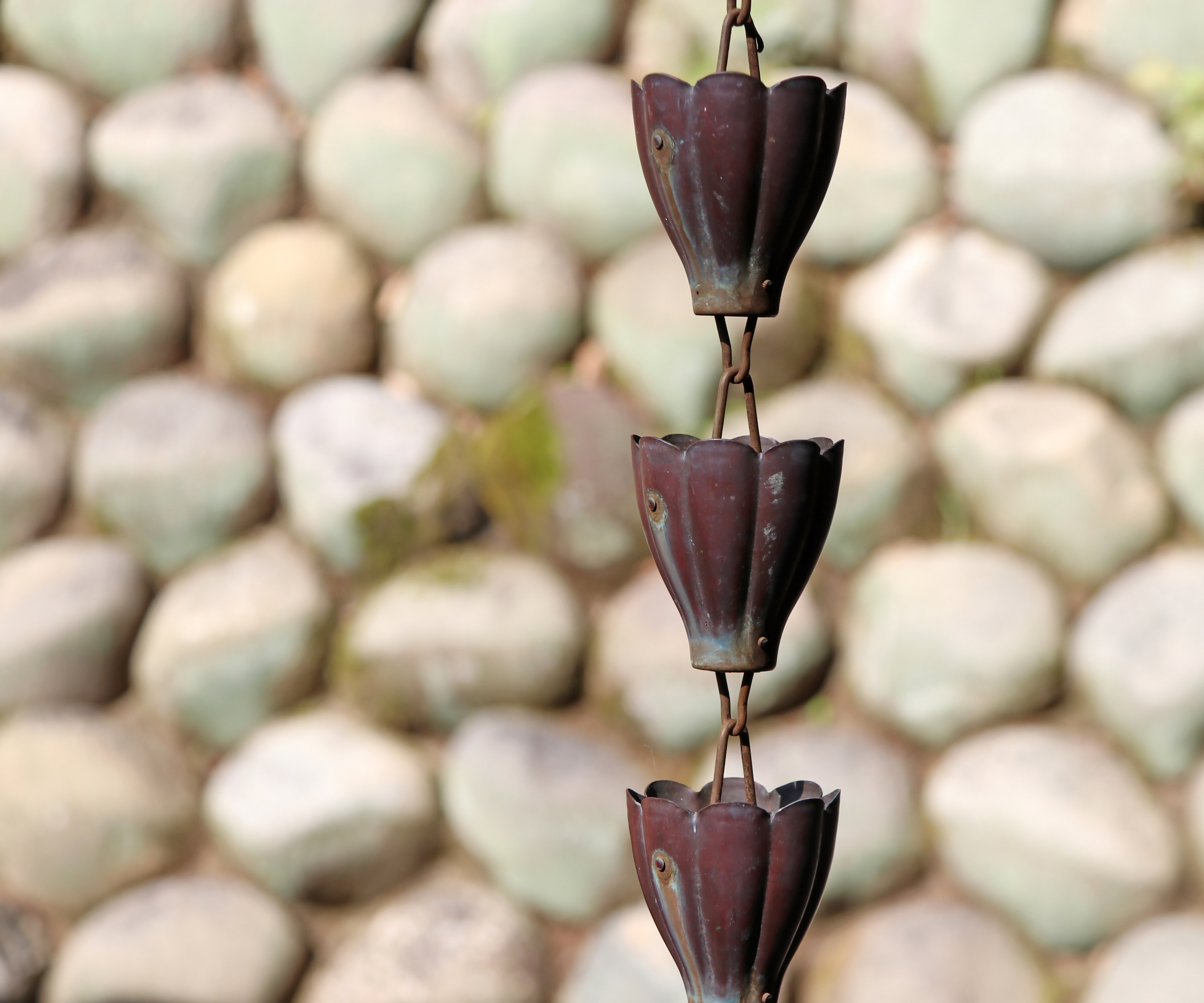
If you want to create an eco-friendly garden, installing a rain chain is one of the best and easiest things you can do for starters. Rain chains originated in Japan, where they have been used for hundreds of years to collect rain water from the roofs of temples, and they remain as popular today.
Harvesting rainwater to sustain your garden plants, lawn and trees just makes sense. It's the most natural way for them to drink, and it saves you money when it comes to your water bills.
You can let the rainwater collect into a barrel, decorative pot or water butt. Alternatively, water can be directed to a part of the garden that requires more irrigation. This might be an arid patch of land, or a flower bed full of moisture-loving plants such as astilbe and ferns.
2. Rain chains can prevent erosion
One reason why rain chains are better than downspouts is because in periods of heavy rainfall a downpipe can cause water to gush out with force, which could lead to soil erosion around the base of the spout.
Rain chains provide a gentler flow, thereby protecting your soil from too much damage and also potentially preventing water from affecting your home's foundations.
3. Rain chains are low maintenance
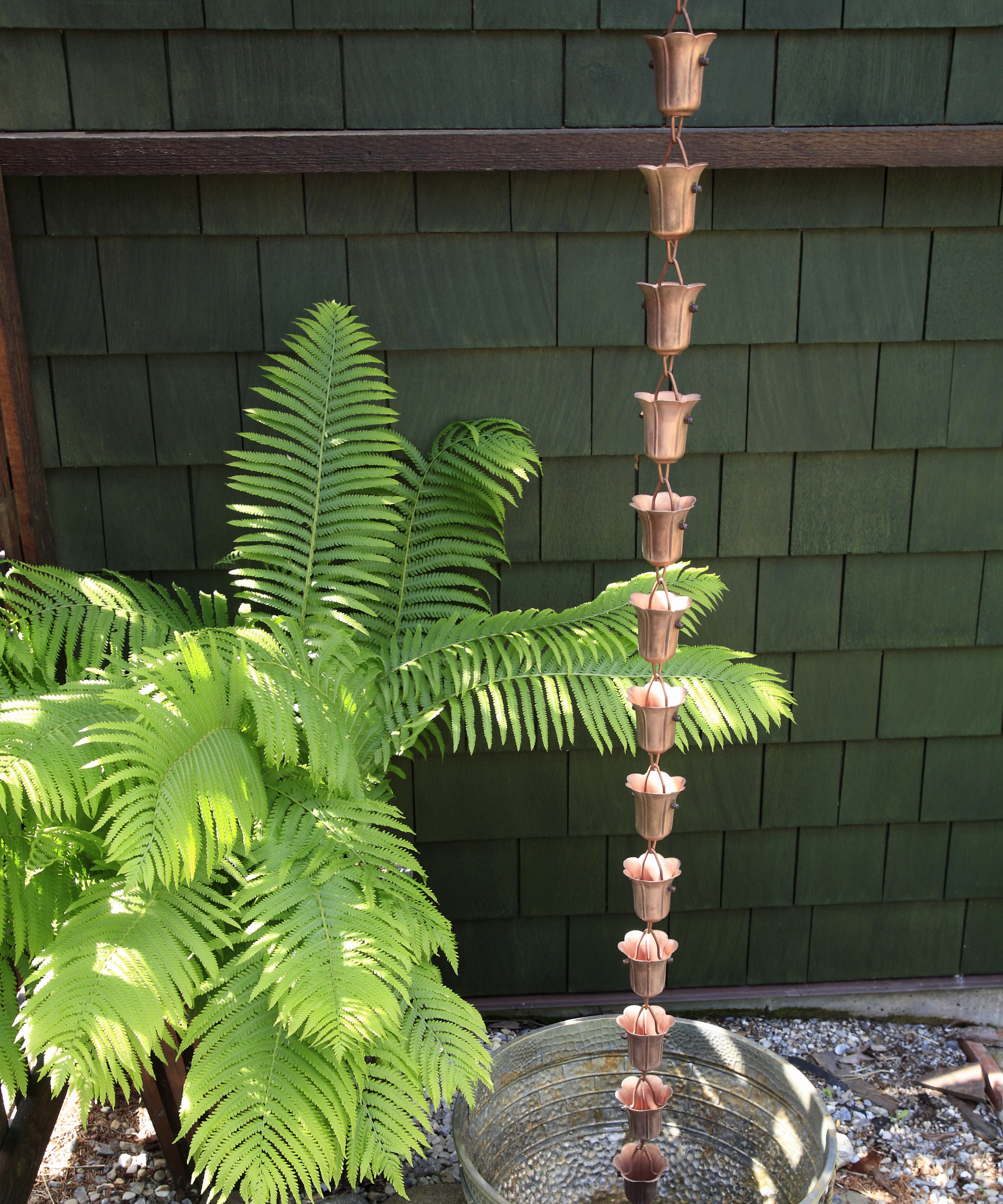
Not only are rain chains an efficient way to harvest rainwater, they also provide a meditative water feature, which is ideal if you are looking to add sensory garden ideas to your yard.
They are simple to install - all you have to do is remove the downpipe and attach the rain chain to the gutter where the pipe used to be. They are also made in durable materials, which means they are able to withstand most extreme weather conditions. The best materials are stainless steel and copper. Copper is most common, and you can find plenty of copper rain chains like this on Amazon.
If your rain chain isn't working correctly, it's a good idea to check and make sure it has been installed in exactly the right place.
It is also worth considering your local climate, especially if you live in an area which experiences harsh winters. In the winter, rain chains can freeze, which makes them heavier. This shouldn't be a problem provided they have been installed correctly, however, it might be an idea to take yours down in periods of intense frost and snow to avoid any potential problems.
4. They offer decorative interest
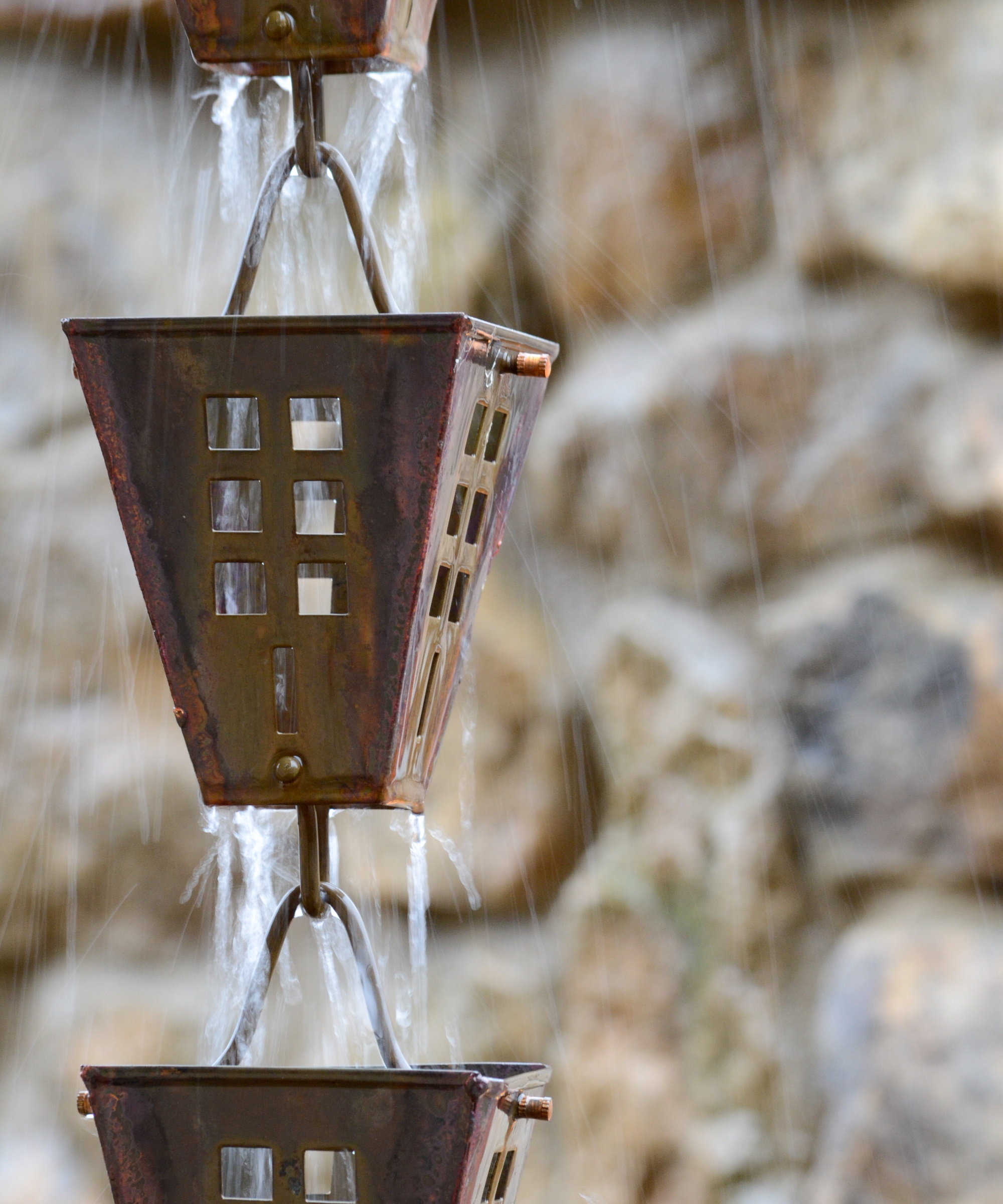
Rain chains add beautiful aesthetic value to your outdoor space, says Janna Bradley, co-founder of Landscape Management Network.
'There are a variety of sturdy metals to choose from when choosing a rain chain, but I always go for copper,' she says. 'A lotus copper rain chain like this at Amazon is very durable while also providing a stunning look that will develop over time. The options for copper rain chains are endless; as long as they're the appropriate length you can truly find something that will stand out in your yard while adding to its overall aesthetic.'
Janna adds that when selecting a rain chain, make sure to measure the height of your home from the ground to the gutter. If the chain is too long or short, it won't be able to safely redirect water away from your foundations.

Janna is the co-founder and COO of Landscape Management Network. With more than two decades of experience in the landscaping industry, Janna began her professional journey in the industry by co-founding TBG Landscaping. Janna is an avid outdoors enthusiast and gardener. She helped launch a non-profit organization that helps provide children with opportunities to get outside through mountain biking lessons and competitions.
5. Your houseplants will thank you
It's not only your borders, beds and outside pots that will be happy drinking rainwater. Your houseplants will also reward your sustainable rainwater harvesting efforts with healthy, glossy leaves.
Houseplants much prefer rainwater over tap water because it helps to maintain the pH level of the soil they grow in, and gives them a little nutrient boost in the process. Tap water often contains chlorine, which can be harmful to plants.
6. Rain chains can be educational
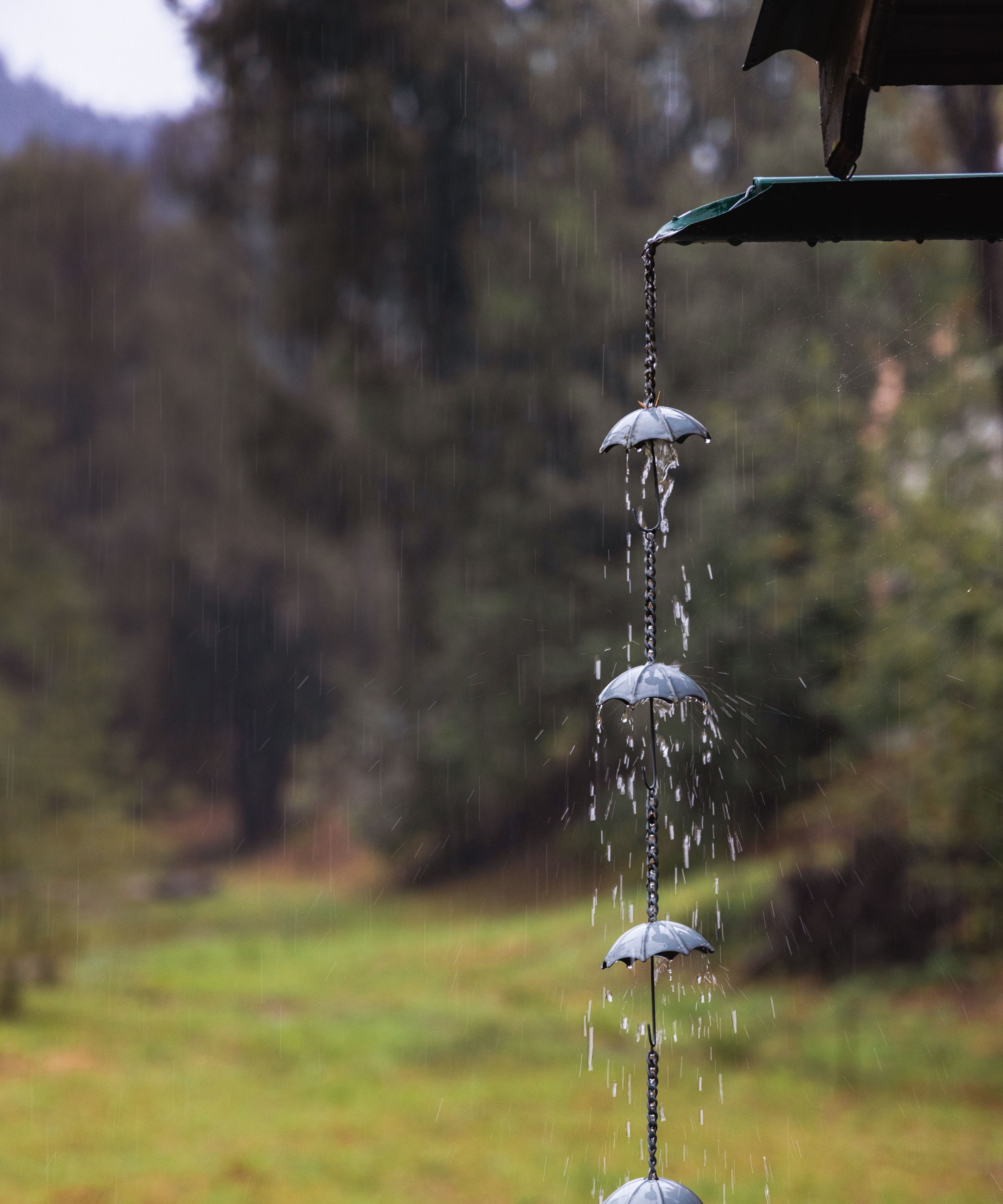
Rain chains can be an educational tool for children or anyone interested in water flow dynamics. They not only teach us about better, more sustainable ways to garden, they can also be an entertaining (and relaxing) way to learn simple physics, by studying the effect a rain chain has on water flow.
Where can I buy a rain chain?
The good news is there are a vast number of styles and materials of rain chains available, so it will be easy to find the one that suits your style of house or yard. Here are our top picks:
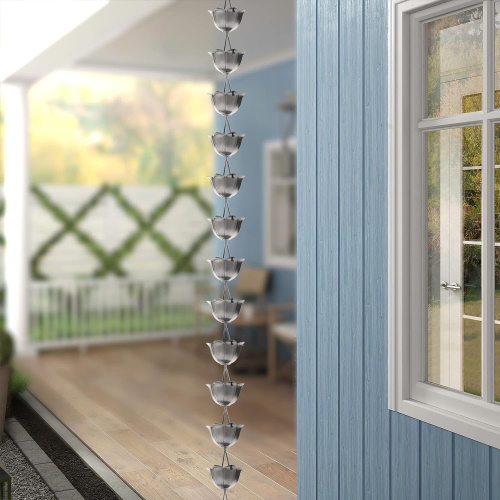
Each cup of the rain chain downspout is crafted with a wide flared mouth to efficiently capture most of the rainwater with slightly indented and defined petals. The modern pewter finish provides a simple, elegant, and contemporary look.
FAQs
Do rain chains work in windy climates
If you live in a climate where you experience high winds, your rain chain could be susceptible to a lot of movement which might render it ineffective. It is definitely a good idea to check you can secure it properly when installing, and consider anchoring it to a dish or bowl on the ground to limit movement.
There are so many different types of rain chain available to suit whatever style of garden you have, meaning they will work for country garden ideas and modern gardens alike.
Sign up to the Homes & Gardens newsletter
Design expertise in your inbox – from inspiring decorating ideas and beautiful celebrity homes to practical gardening advice and shopping round-ups.

Rachel is a gardening writer, flower grower and floral designer. Her writing career began on Country Living magazine, sparking a love of container gardening and wild planting. After more than a decade writing for and editing a range of consumer, business and special interest titles, Rachel became editor of floral art magazine The Flower Arranger. She then worked as a floral designer and stylist for six years, before joining Homes & Gardens. An expert in cut flowers, she is particularly interested in sustainable gardening methods and growing flowers and herbs for wellbeing. In summer 2024, she was invited to Singapore to learn about the nation state's ambitious plan to create a city in nature, discovering a world of tropical planting and visionary urban horticulture.
-
 Triangular shaped garden ideas – landscape designers share 9 ingenious ways to redesign your corner plot
Triangular shaped garden ideas – landscape designers share 9 ingenious ways to redesign your corner plotExpert tips for planning, planting and finessing a triangular shaped plot, so you can savour the space year round
By Jill Morgan
-
 These are the 6 things designers say you should never put in a small living room
These are the 6 things designers say you should never put in a small living roomThe items that should be banned from a small living room are right here along with what you should opt for instead
By Sarah Warwick
